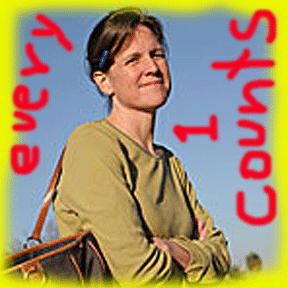
It’s late, but in the midst of all the primary election furor, I don’t want to let this day go by without acknowledging the brave and important accomplishment that was celebrated in the Los Angeles Times this morning. Today, Monday (it’s still Monday as I’m writing this), the blog known as the Homicide Report, created and written by LA Times reporter, Jill Leovy, is a year old.
The Homicide Report was born after Leovy had been covering crime in LA’s poorest neighborhoods for some time and had become bothered by all the deaths that went completely unnoticed, except perhaps by friends and immediate family of those murdered. It was as if some lives—and their endings—simply mattered far more than others. So Leovy talked the Times into an unusual project. She wanted to record every single murder in Los Angeles County for one year, reporting and writing what she could about these deaths as time and energy permitted.
Now the year has passed and Jill has written a Column One story about those 12 months she spent tracking down every homicide, doing what she could to acknowledge that each killing produced a loss for someone, and that attention must be paid. Here’s a bit of what she wrote:
This newspaper typically covers about 10% of the homicides in Los Angeles County each year. They are often the most sensational or shocking: a baby hit by a stray bullet, or a celebrity murder.
But for the last year, the paper’s website, latimes.com, has recorded every homicide. It was my idea. I reported on crime for the paper, and I wanted readers to see all the killings — roughly 1,000 violent deaths each year, mostly of young Latinos and, most disproportionately, of young black men. The Web offered what the paper did not: unlimited space.
So the Homicide Report, as it was called, began with the simplest of journalistic missions: exposing a painful, largely unseen problem.The first list of homicide victims, published just over a year ago, contained the names of 17 people. Eight were Latino. Six were black. Two were of Cambodian descent — killed in a double homicide. None were white. Most were in their 20s.
Readers responded strongly. “Oh my God,” began one of the first posts by a reader. “The sheer volume is shocking,” wrote another. “Almost like they’re disposable people,” wrote a third.
The city was so unused to anyone caring that most agencies Leovy approached were startled by her requests and her digging:
Many agencies were not used to releasing details. One police press official was surprised to learn that victims’ names were public information: No reporter had ever asked him for that, he said.
When I first presented a list of victims to the state Department of Motor Vehicles for photos, the clerks were baffled. Twenty young people every week? “What is this?” one asked. “Did a plane crash?”One could know the numbers in the abstract yet still be unprepared for the sheer volume, similarity and obscurity of the victims. Los Angeles County’s homicide rate was on the decline, and 2007 was destined to be one of the least violent years in a generation. Yet the concentration of killings remained the same — a pocket epidemic of violent death among black and Latino men in neglected corners of society.
The Homicide Report became one of the Times most read online features. Sure there was morbid interest. But more than any other continuing section in the paper it humanized the city through, of all things, the lens of its most violent deaths. And for families of those murdered the Homicide Report was a validation, a guarantee that a loved one didn’t die unnoticed.
My public defender friend reads it every day, worried that she’ll find the names of past clients. I read it nervously when I hear there’s been a shooting in one of the areas of town that I know well from my own reporting.
One day the worst was true. A young man I’d known since he was a teenager was killed, shot to death on the freeway. I happened to be out of state the week of the shooting and so couldn’t go to his funeral. After I heard the news, I stared at his photo on Jill’s blog off and on for days. He was a former gang member who’d made it out, but who then back slid into dealing. We all knew it. It was painful to look at the picture of him in better times, dressed up looking happy and handsome. Yet it was also somehow weirdly soothing to see his image there online because, whatever his failings, he mattered.
The Times has now reassigned Jill to another beat and someone else will take over the Homicide Report. Yet what is most important is that for a full year Jill Leovy put her heart and her time into filling a crucial need that Los Angeles had not admitted it possessed. In so doing, Jill gently demanded that the rest of us pay attention. And so we did.

Now, why weren’t there any Caucasians in the list?
Because there weren’t any Caucasians killed in that time period. Hypothetically this is exactly what YOU want from reporters. Just facts with minimal analysis. But you didn’t even look at the link or consider what an excellent project this is. Instead, you criticize the good people working hard to bring attention to some of the problems in the City of Los Angeles. God forbid you can find a few words of praise for reporters doing exactly what you claim to want.
Good work, reporters.